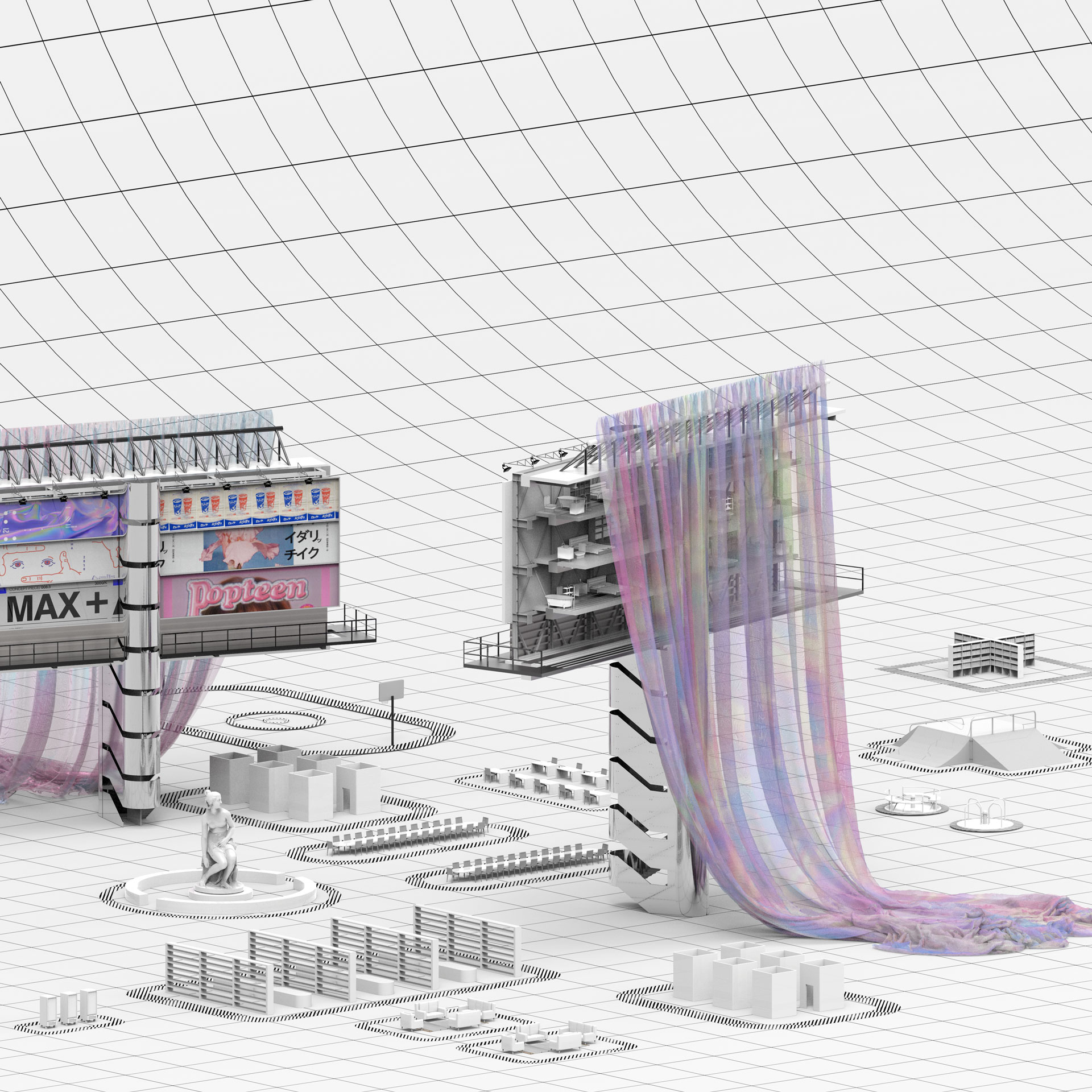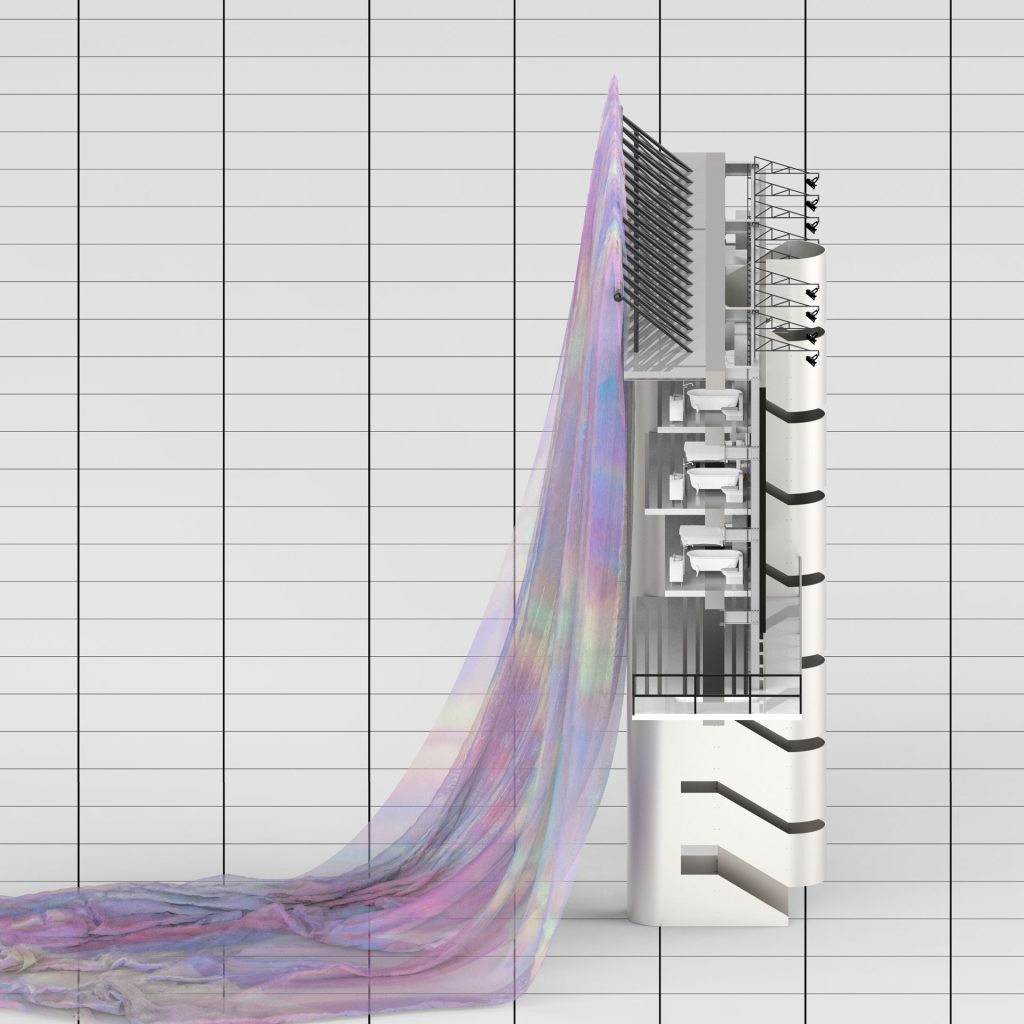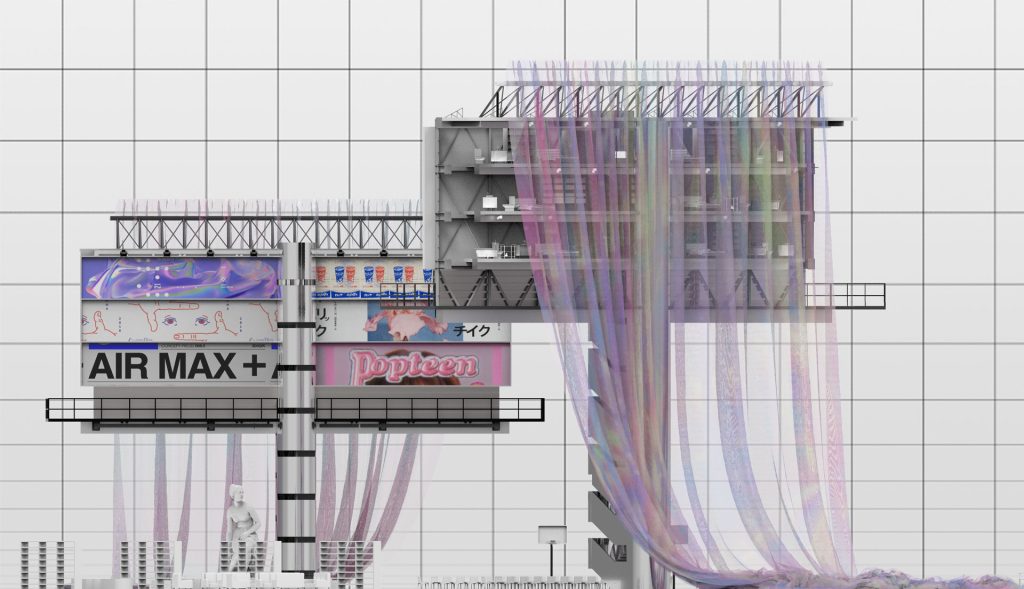company
type
role
team
-
space
Designer | researcher
hanie amjadia
2019

Abstract
In a time when the boundaries between life and labor dissolve into one another, we propose a dwelling not merely as a shelter, but as an arena where human existence fuses seamlessly with vocation. This is not a house in the traditional sense—it is a vessel for becoming, where the rhythms of private rituals and professional performances converge.
Woven through its spatial fabric—public, private, and semi-private—are gradients of visibility. Here, space is not just built but broadcasted. At the center of this architectural narrative lies the billboard, not only as a surface but as a statement—reflecting a profound shift in how identity is constructed and consumed.
We no longer inhabit homes; we inhabit screens. The billboard emerges as the new hearth—its glowing face no longer a call to commerce alone, but a portal into personal mythology. These screens become façades of selfhood, revealing curated fragments of life-as-work, work-as-life. In contrast, the “urbanism of objects”—the functional, anonymous furniture of the interior—acts as a counterpoint: essential, yet mute, grounded in utility rather than spectacle.
Here, advertising transcends its commercial origins. It becomes a philosophical medium, a performance of being. Every ad is a gesture—an offering to the collective gaze, a declaration that one is through what one shows. Privacy is not lost but redefined. It becomes an intentional withholding, a conscious choreography of exposure.
Thus, this project does not merely design a space; it frames a condition. It confronts the modern human not as a dweller in rooms but as a producer of meaning in view of others. The billboard becomes a mirror—not of vanity, but of survival. To be seen is to be validated; to advertise is to affirm existence.
In this way, architecture is no longer silent. It speaks, it streams, it sells—and perhaps, it saves. For in the economy of attention, the home becomes the final stage, and the advertisement becomes the soul’s echo, flickering in pixels.


In the contemporary landscape, advertising transcends its traditional role of promoting products; it has become a central medium through which individuals construct and project their identities. The modern dwelling, once a sanctuary of privacy, now often serves as a stage for this continuous performance of self, with digital interfaces and social media platforms acting as the new façades.
This phenomenon aligns with the concept of symbolic self-completion, where individuals use external symbols—brands, products, and curated images—to compensate for perceived gaps in their self-identity. Advertising, in this context, provides the symbols and narratives that individuals adopt to express who they are or aspire to be. The home, integrated with technology, becomes a space where personal and professional identities are not only lived but also broadcasted, blurring the lines between private life and public persona.
However, this integration raises philosophical questions about authenticity and autonomy. When self-expression is mediated through commercial platforms and influenced by market-driven narratives, the risk arises that individuality becomes commodified. Movements like subvertising and initiatives by collectives such as Brandalism challenge this by disrupting traditional advertising messages, encouraging individuals to reclaim their identities from corporate influence.
In essence, advertising in the contemporary era is not merely about selling products; it’s about shaping the very fabric of human identity. As we navigate this complex interplay between self-expression and commercial influence, it becomes imperative to critically assess the spaces we inhabit and the messages we internalize, striving for a balance that honors genuine individuality amidst pervasive advertising narratives.
